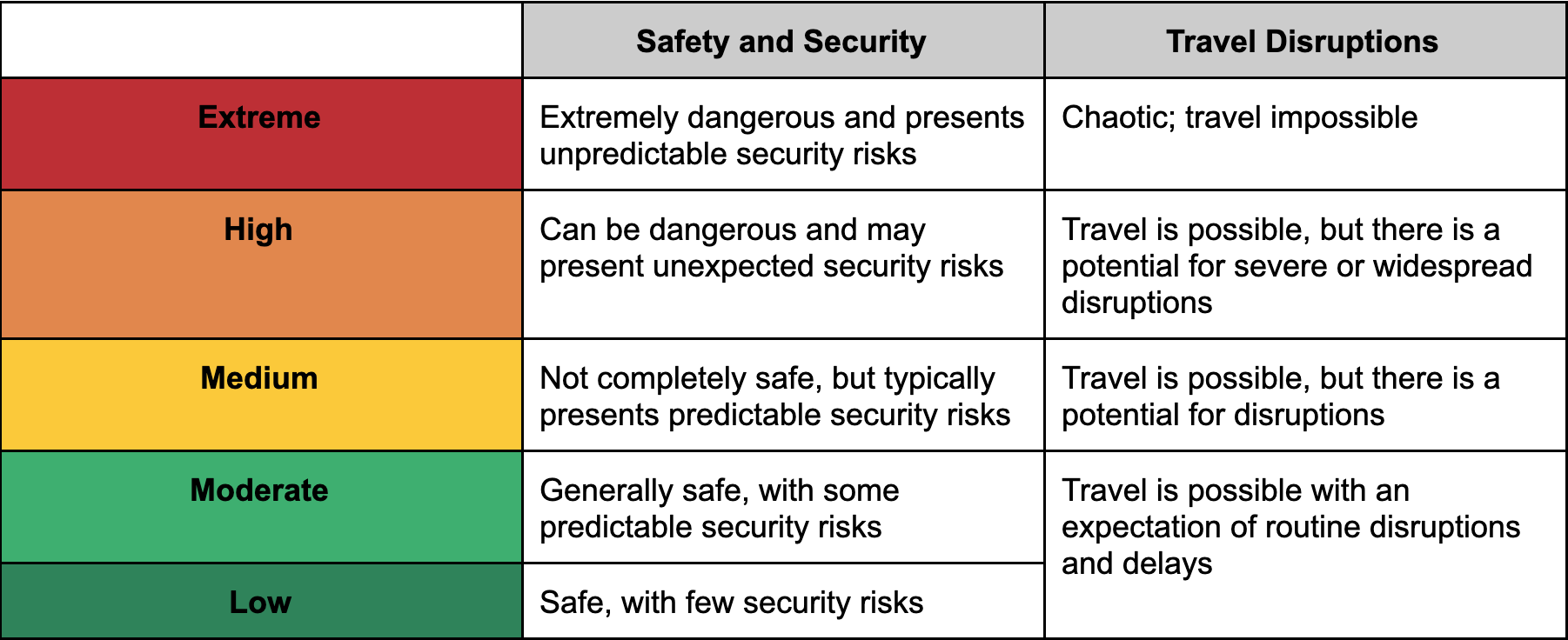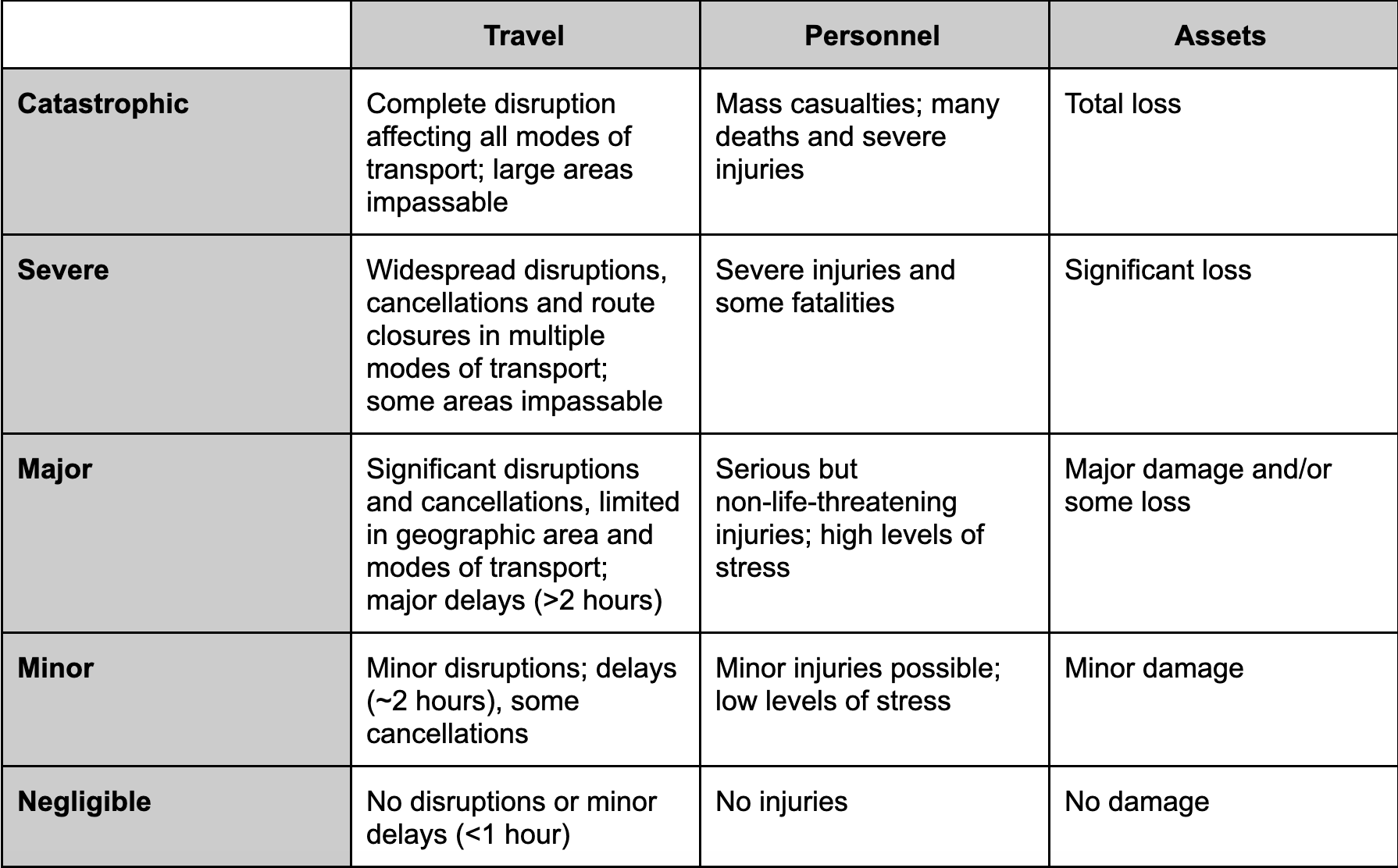How does Riskline determine Risk Levels?
Riskline uses a consistent methodology for determining risk across all our reports.
We assess risk in every report we publish using Risk Levels. This methodology is based on best practices from internationally recognised risk management procedures and consists of five Risk Levels: Low, Moderate, Medium, High and Extreme. In general, each Risk Level has the following characteristics:

Risk Level characteristics
When assessing risk, our analysts take into consideration the actual or potential impact of the threat or hazard they are reporting as well as the likelihood of that threat or hazard taking place, if it has not already. Therefore, a threat that could have a "catastrophic" impact – such as a potential mass casualty attack – would only be considered a Moderate Risk if judged as "unlikely" to take place.

Risk Level matrix
Our analysts will first assess the impact of an event or incident, or in the case of a planned or forecast event, the potential impact. Analysts will consider the actual or potential impact on travel (mobility), the physical safety of people and, to a lesser extent, damage to infrastructure and assets.

Impact matrix
In the case of an incident or event that has already taken place, the likelihood of the event will be "certain". For all other planned and forecasted events or for general assessments of risk, our analysts will determine the likelihood that the risk or hazard manifests from the table below.

Likelihood matrix
Updated 8 months ago
